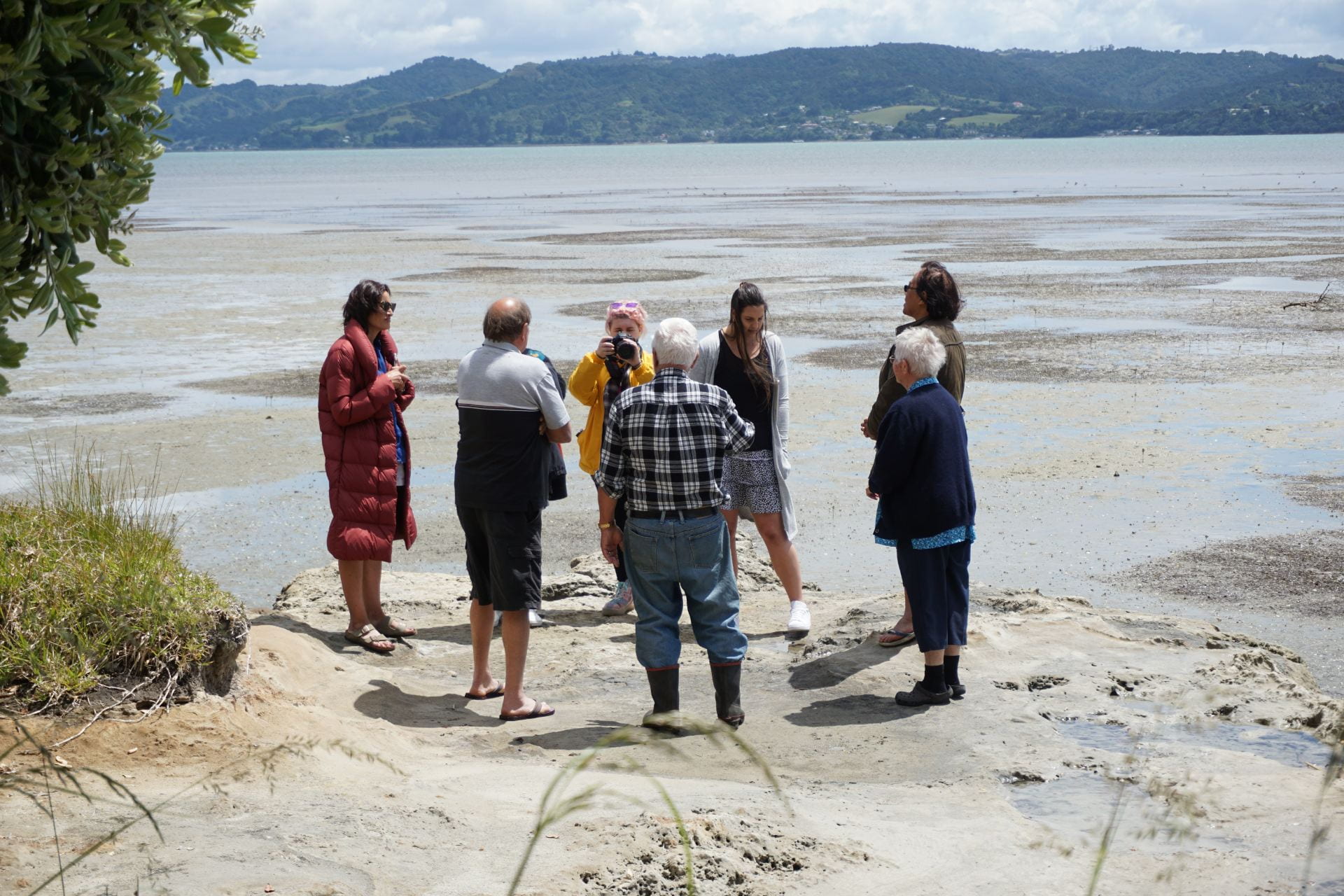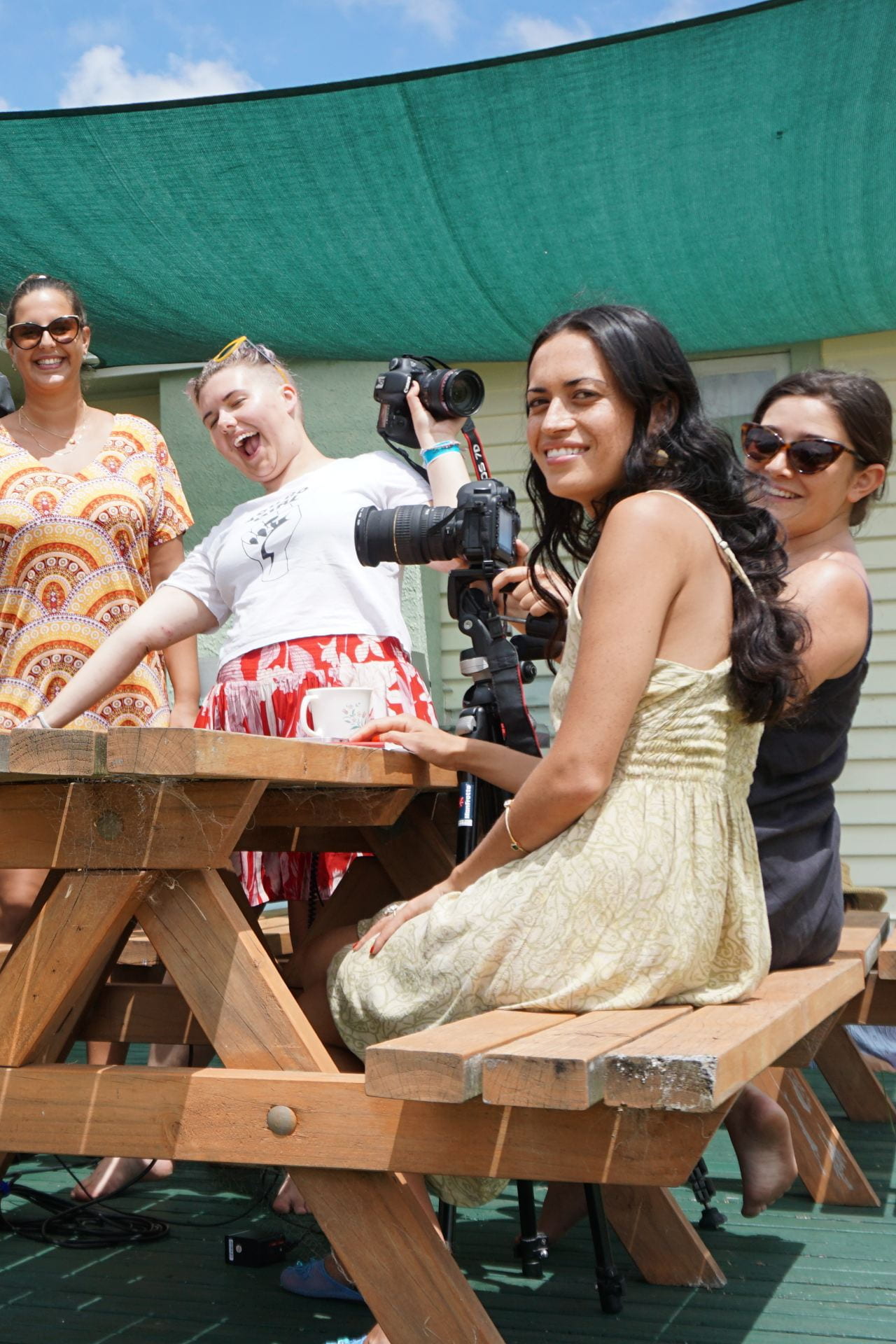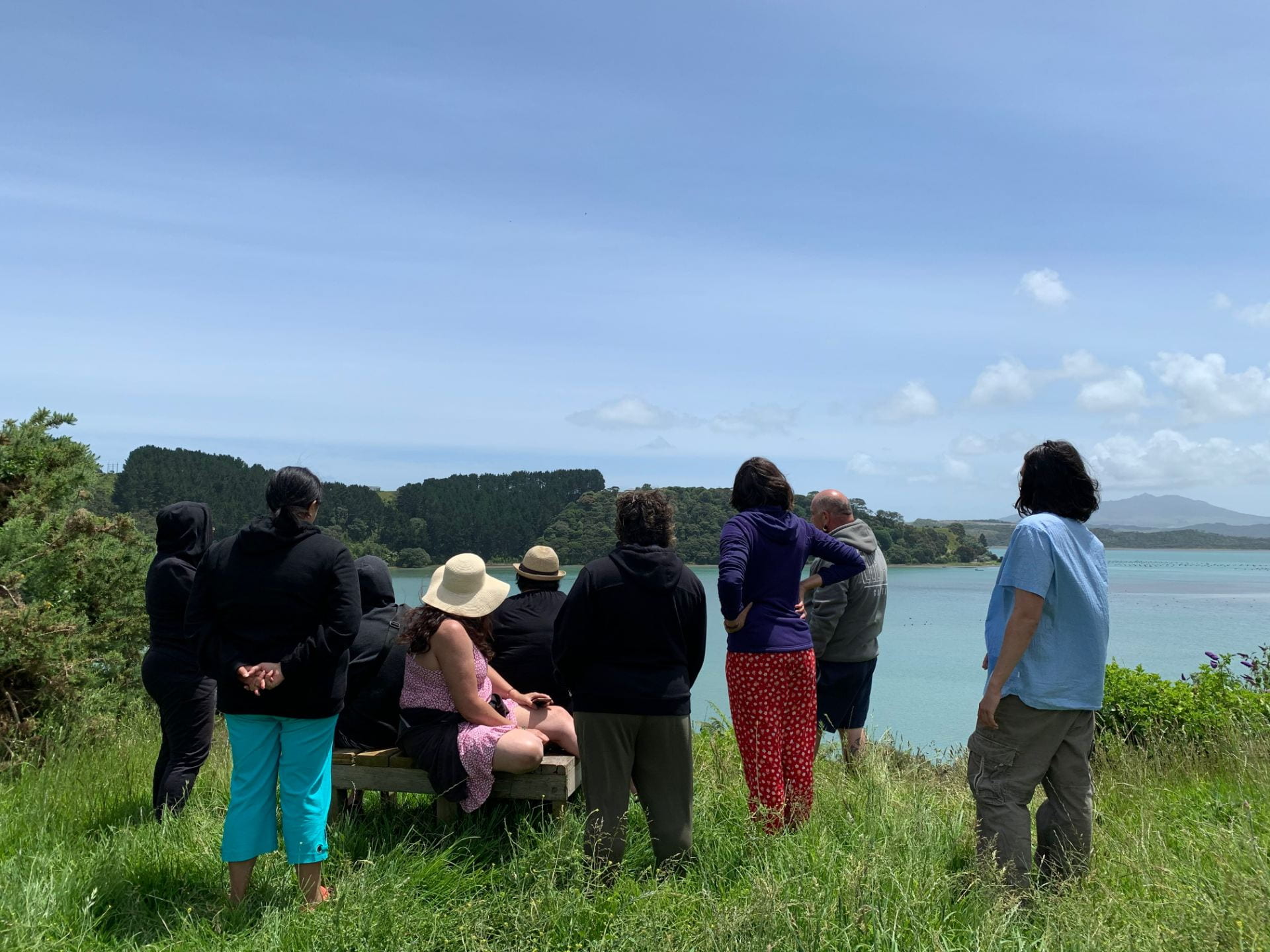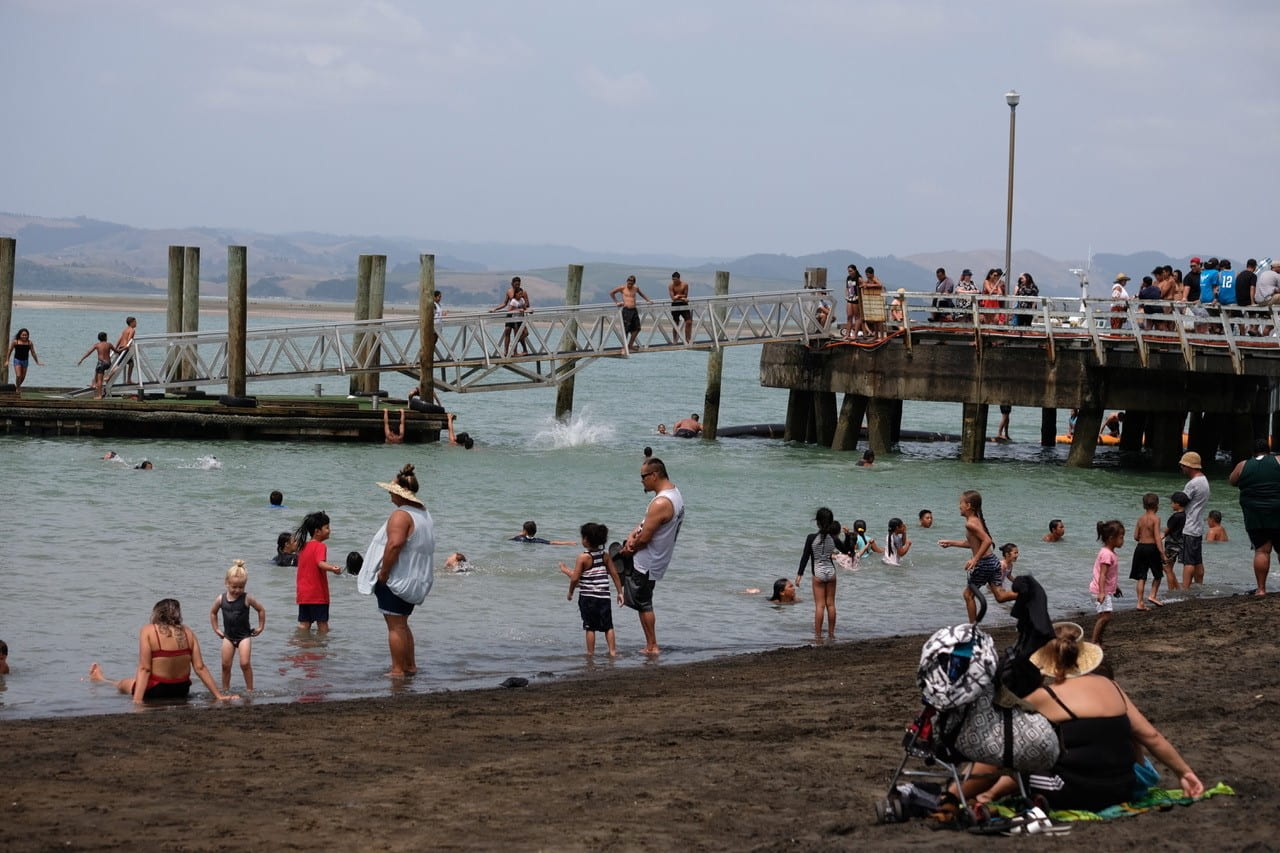
Rangatiratanga ō te Wai

Ko te Waimāori tō tātou taonga: Septic tank mitigation in Takahiwai
Funded by Ngā Pae o Te Māramatanga
This community-led project, with Dr Mere Kepa and Ms Luana Pirihi, investigates the impact of septic tank use on surrounding whenua and moana at Takahiwai. The project introduces novel green chemistry methods of maintaining and monitoring septic tanks in collaboration with mātauranga Māori. The research which included a series of community wānanga and hīkoi contributes to a larger community project that is committed to mitigating health and environmental issues at Takahiwai. A short film titled “Flushed” made by Takahiwai kaumātua, residents and JHMRC graduate researchers showcases some of the project’s research findings.
Listening to the voices of our harbours:
Kāwhia, Manukau and Whangārei
Funded by Royal Society Te Apārangi Marsden Grant
Marama Muru-Lanning, Keri Mills, Shane Solomon, Gerald Lanning and Professor Jim Igoe are collaborating with flaxroots Māori to investigate past and present kaitiakitanga over Aotearoa’s harbours. The project centres on Kāwhia, Manukau and Whangārei harbours as case sites and asks how kaitiaki understand harbours and how we best care for them.
The word ‘kaitiaki’ has entered our legislation and policy, but in practice it is often used as a convenient Māori shorthand for ‘stakeholder,’ without recognition that the term is profoundly embedded in the culture from which it comes. Kaitiakitanga has deep roots in Māori history, and the concept entered mainstream New Zealand politics as a result of Māori activism in the 1980s, particularly in the Manukau harbour claim led by Dame Nganeko Minhinnick. Our research reclaims the political nature of kaitiakitanga and the work of the women and men who have fought to protect the environment and to be recognised as kaitiaki. We explore how the codification of kaitiakitanga into law and policy has hindered or assisted Māori in their exercise of kaitiaki responsibilities. Ultimately we aim to show the complex and diverse nature of relationships that Māori have with the land-sea environment, and demonstrate the many ways that mātauranga Māori, and the kaitiaki who carry it, are instrumental in the past, present, and future wellbeing of our harbours.



Kaumātuatanga
Kaumātua wellbeing, health, hauora, retirement needs, life stories, decision-making contributions and kaumātua activities
Te Hononga
Joining and connection through Mātauranga Māori research methods that allow connectivity with hapori kanohi-ki-te-kanohi and ā-ipurangi; rangatahi development of digital content; protection and security of JHRC data, including completion of Te Tai Tokerau Dictionary
Kaitiakitanga o te Kai me te Rongoā
Māori foods and rongoā sovereignty, importance of whakapapa in relation to soil and sand, gardens, bush, forests, rivers and the sea
Ngā Hangarau ka Puea
Māori interests in new robotic and emerging technologies, protection and security of Māori data and privacy of Māori algorithms
Rangatiratanga o te Wai
Māori access to water (waimāori and waitai), water security, privatisation and commodification of water, critique of the Three Waters Framework, property rights, kaitiakitanga, impacts of new and expanding ports on mana whenua